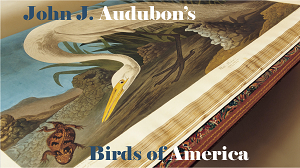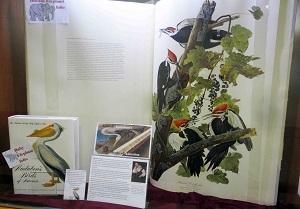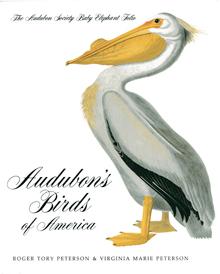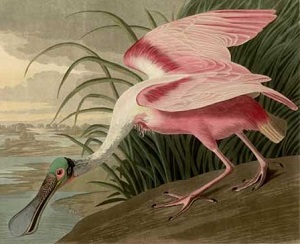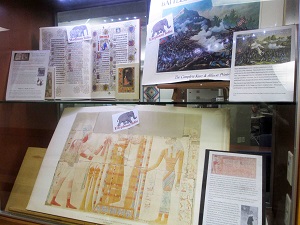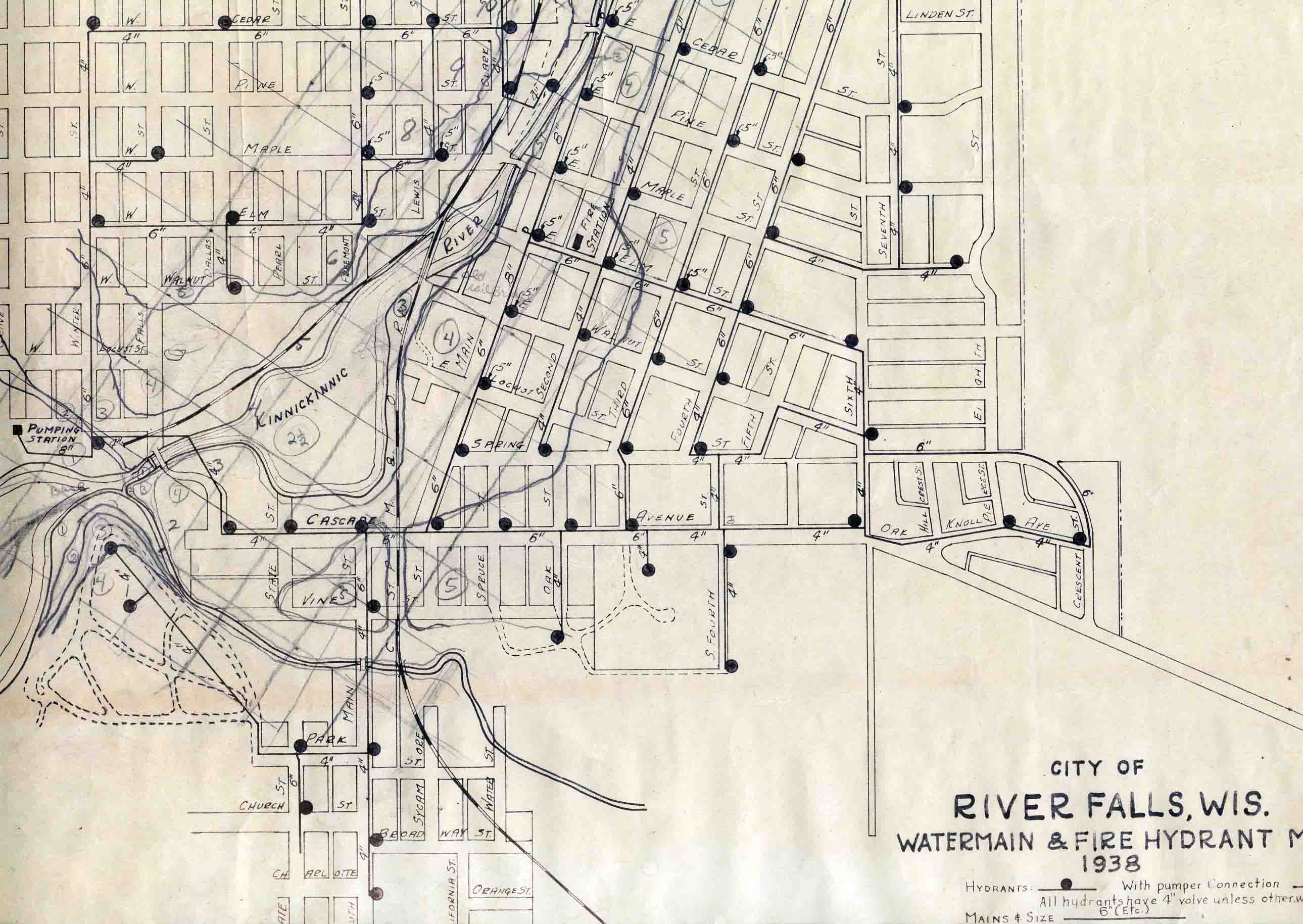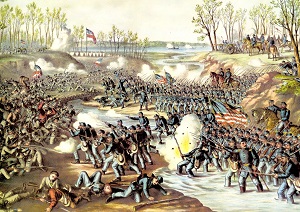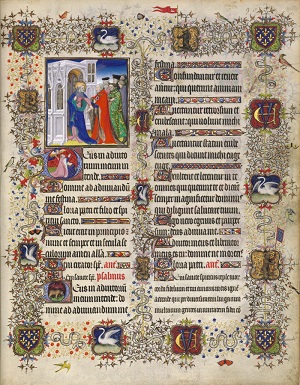UNIVERSITY OF WISCONSIN River Falls
Archives Resources
Elephants and Other Folios
Folio is a term used in the world of books and printing that has three distinct, but interconnected, meanings. As used in this display it refers to the approximate size of a book.
The actual size of a folio book depends on the size of the full sheet of paper on which it was printed, and in older periods these were not standardized, so the term's meaning is only approximate. Historically, printers used a range of names such as (with approximate maximum page height):
- Double Elephant folio (50 inches, 127 cm),
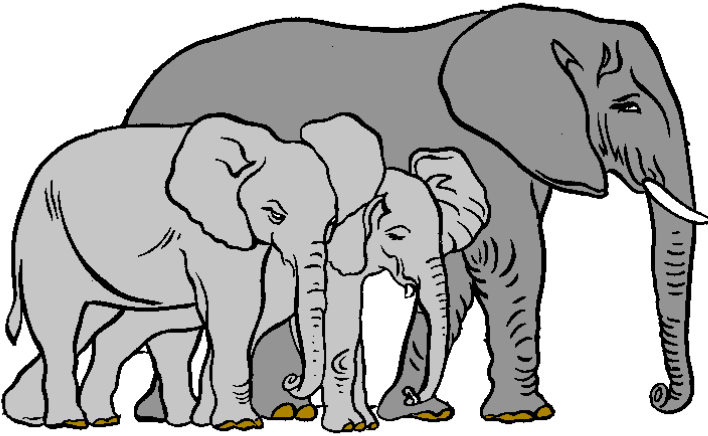
- Atlas folio (25 inches, ca 63 cm),
- Elephant folio (23 inches, ca 58 cm),
- Royal folio (20 inches, ca 51 cm),
- Medium folio (18 inches, ca 46 cm), and
- Crown folio (15 inches, ca 38 cm).
The Special Collections in the University Archives and Area Research Center includes a number of oversize folios in the medium and elephant size, plus one double set of double elephant folios. Several of these are described below.
DOUBLE ELEPHANT FOLIO &
Baby Elephant Folio
John James Audubon (1785-1851) was not the first person to paint and describe all of the birds of America—Alexander Wilson has that distinction—but for half a century he was the country's dominant wildlife artist. His seminal Birds of America, a collection of 435 life-size prints, quickly eclipsed Wilson's work and is still a standard against which 20th and 21st century bird artists are measured.
The Birds of America, from Original Drawings by John James Audubon, was published by the author in London, between 1827-1838, in 4 "double-elephant" volumes of broadsheets. There are 435 hand-colored, etched, and aqua-tinted plates in an original double-elephant folio set. Only about 130 of the original 200 sets of Audubon's Birds of America are in existence today.
UWRF's two reproduction volumes are selections from Audubon's double-elephant folio, published in 1973 by Voyageur Press of Minnesota, Ariel Press of London, and Edition Leipzig of Germany. The publishers were known for producing high-quality facsimiles, historical reprints, and/or nature and wilderness books. Only 250 copies of The Birds of America: A Selection of Landscape Plates Facsimile were produced for sale in North America. UWRF's volumes are numbered 937 (North American volumes number 750 to 1000).
Volume 1 contains all portrait-shaped reproductions and volume 2 contains all landscape-shaped. Audubon's original folio pages were 39½" by 29½", the pages in the reproduction volumes are 38½" tall by 26½" wide.
Baby Elephant Folio
In 1981 the Audubon Society published magnificent reproductions of Audubon's hand-colored engravings in full color, organized for the first time in modern phylogenetic order. The 435-page publication has 917 illustrations, including 482 in full color. The book is affectionately known as the "Baby Elephant" folio.
Elephant Folios
The Temple of King Sethos I at Abydos
Beginning in 1933, a series of four huge (elephant folio sized) volumes was published entitled The Temple of King Sethos I at Abydos, edited by Alan H. Gardiner, and largely devoted to the superb and beautiful copies of the wall paintings of the temple done by Amice Calverley. The books were published jointly by the Egypt Exploration Society and the University of Chicago. The vast expense of these magnificent publications was paid by John D. Rockefeller, as it was far beyond the capacities of the Society and the University. These volumes, which are a priceless record of Egyptian temple art, sacred likenesses, and the pharaonic cults, are extremely rare.
The four volumes contain 231 plates (illustrations) covering the seven chapels in the Osiris complex and the Second, or Inner, Hypostyle Hall of the Seti I Temple.
Amice Mary Calverley (1896-1959) was a 20th-century Egyptologist who was instrumental to the recording and publication of the decoration in the temple of King Sethos I at Abydos. In 1926 she started to teach herself drawing for archaeology at the British Museum. In 1928, Calverley was engaged by the Egypt Exploration Society to work as part of a project to record the decoration in the temple of King Sethos I at Abydos. The project was initially conceived as a purely photographic publication, but because of the quality of Calverley's draughtsmanship and her high standards, the more ambitious publication you see here was possible.
The pictographic archives produced by Calverley became an irreplaceable resource for studying the temple, and was used by the Egypt Exploration Society in its further work on the temple in 1979-83.
Battles of the Civil War: The Complete Kurz & Allison Prints
Kurz and Allison were a major publisher of chromolithographs in the late 19th century. They built their reputation on large prints published in the mid-1880s depicting battles of the American Civil War. The company tried to capitalize on the growing sentimentalism among Civil War veterans. In all, a set of thirty-six battle scenes were published from designs by Louis Kurz, himself a veteran of the war.
This book of reproductions, published by Oxmoor House in 1976, reproduced all 36 of the images at their original size. The pages are perforated so they can be easily removed and framed.
Medium Folio
The Grandes Heures of Jean, Duke of Berry, is a 15th-century Book of Hours commissioned by the Duke of Berry, the most celebrated patron of the arts during the Gothic period. It was finished in 1409. The original 252 parchment-pages volumes is in the Bibliothèque nationale de France and Musée du Louvre.
The Grandes Heures is the largest Book of Hours ever created. All pages in this reproduction were reproduced to their exact size (40 x 30 cm., or approximately 15¾" x 11¾"), making it a mundanely titled "Medium folio." The volume includes 41 large miniatures; historiated initials, and drolleries throughout.
A book of hours is an illuminated, Christian devotional book that was popular among the Christians of Northern Europe during the Middle Ages. The book of hours was developed for lay people (commoners) who wished to incorporate elements of monasticism into their devotional life. Some of the books made for wealthy patrons, however, were extremely lavish, boasting brightly colored, full-page miniatures. Tens of thousands of books of hours survive to the present day.
